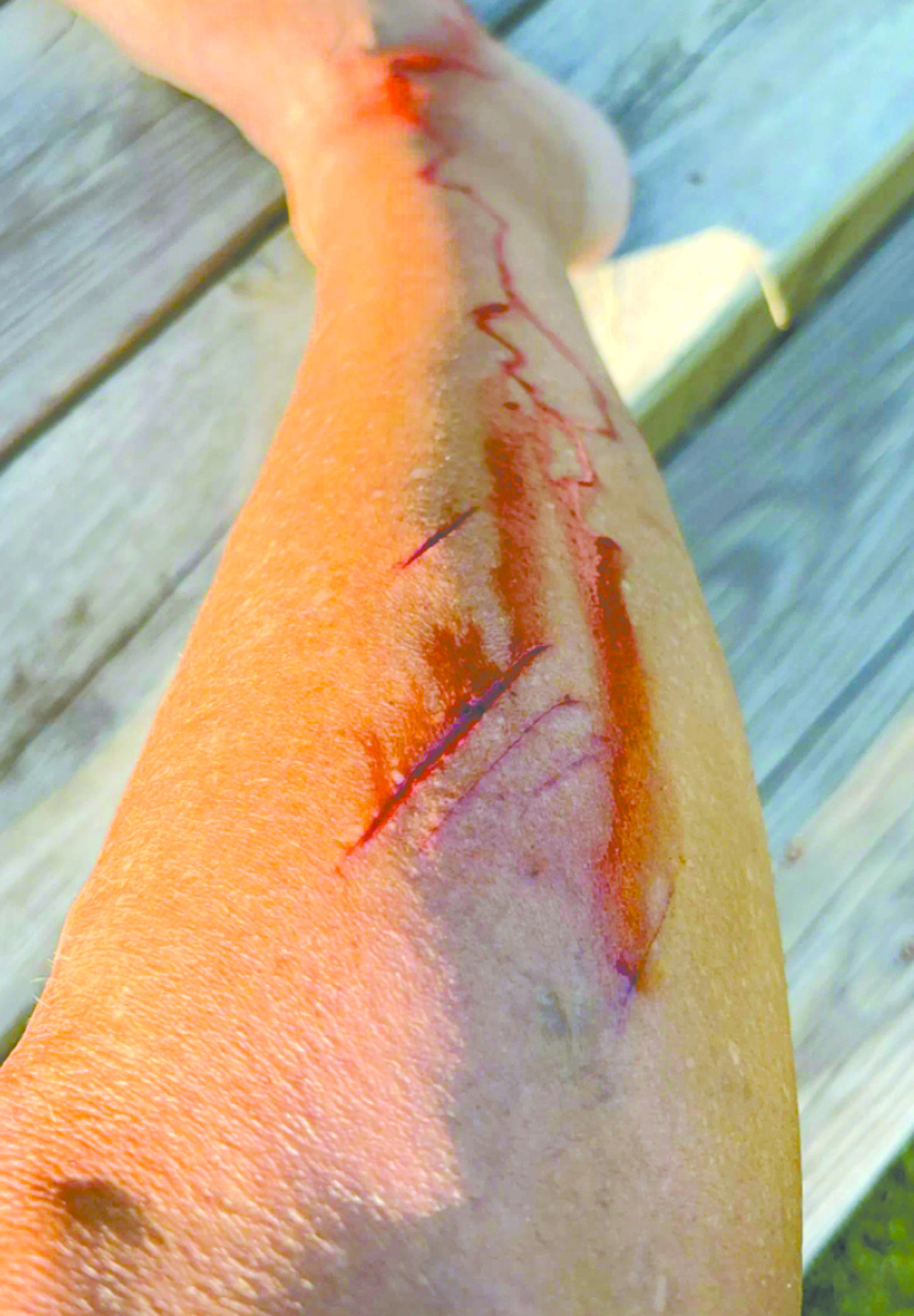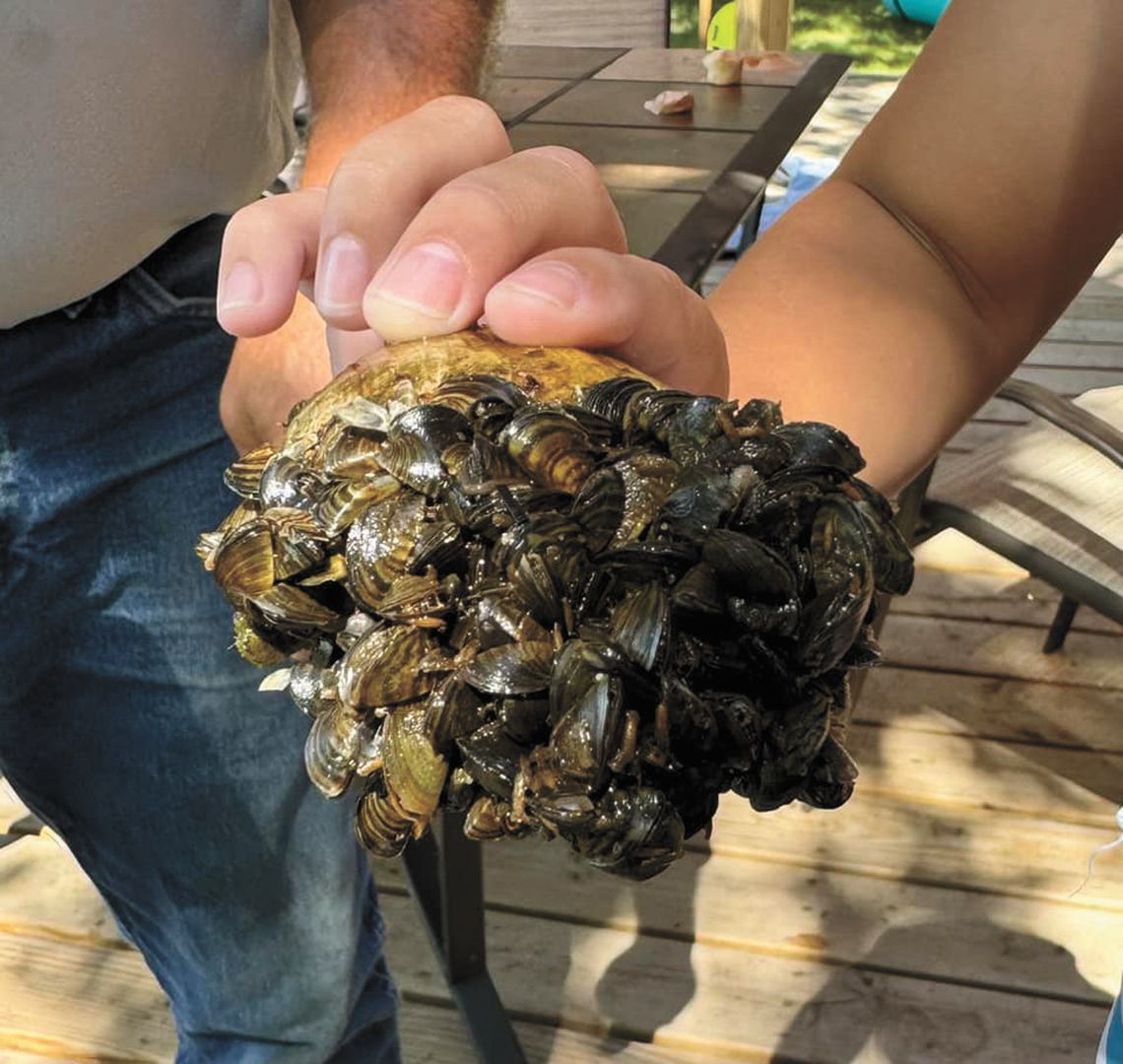As the summer nears its end, lake residents and visitors in northeastern South Dakota are considering removing docks, pulling in boats and putting away the skis. Lake fun will most definitely be missed. However, one more recent aspect of lake life will likely not be missed at all as colder weather approaches: zebra mussels. The invasive species were found to have inundated both Roy and Clear Lakes in 2023 and this summer, made their largely unwanted presence felt.
Zebra mussels are invasive, fingernail-sized mollusks that probably arrived in the Great Lakes in the 1980s via ballast water that was discharged by large ships from Europe, according to the U.S. Geological Survey. The USGS says zebra mussels negatively impact ecosystems in many ways: They filter out algae that native species need for food, clog water intakes and attach to — and incapacitate — native mussels.
Zebra mussels have now been detected in over 20 South Dakota lakes and rivers.
Residents living on both Clear and Roy discussed the presence of zebra mussels and the impacts they observed, and often, painfully felt.
Clear Lake resident Joseph Benidt said, “I first observed zebra mussels a year ago when bringing the dock in and saw a few. When bringing the dock in this year, the posts and wheels had to be scraped off to remove them.”
Benidt added, “I can no longer enter the lake without water shoes and I don’t allow my nephews in the water without them due to getting cut.”
The risk of zebra mussels cutting and scraping people was noted by many. Kelsi Heer said, “My kids have both cut their feet in Clear Lake. We had to use a tweezer to get the piece of shell out of my daughter’s foot.”
“Water shoes are pretty close to necessary,” Claire Bremmon said. “And it’s gotten noticeably worse throughout the summer.”
Patty Niesen added, “Our beach on Clear is just littered with them. Our son sliced his thumb open on them while repositioning a cinder block in front of the dock tire following the big wind storm.”
“We had to adjust our lift and the underside was completely coated with the sharp little buggers,” said Brad Heitmann. “It was my first experience with just how sharp zebra mussels are.”
Some lake folks noted how fast the zebra mussels work. “After the big wind storm, our dock was upside down in the lake for about five days,” said Dale Rinas of Clear Lake. “When we flipped it back on the wheels there was a zebra mussel about every four inches in every direction.”
People also worry about the impact this will have on other aquatic species. “I am saddened by the change in the lake as these things have a disgusting smell and I have seen them covering the large native mussels and am worried this is killing them,” emphasized Benidt.
Tim Johnson who lives on Roy Lake made similar observations regarding freshwater clams on that lake. “We were on the south end of Roy on the Sandy Beach and about four feet out from the edge of the water was nothing but clams covered with zebra mussels dying of starvation because the mussels had attached themselves over the shells and they couldn’t open up to eat.”
Niesen summarized, “Zebra mussels will definitely change the ecosystem of the lakes and that’s never a good thing when it’s not something native.”
The organization South Dakota Lakes and Streams Association has accused the state of inaction when it comes to zebra mussel prevention and mitigation. According to association board member Deb Soholt, a former state senator, the state has been “throwing up its hands in capitulation.”
Unfortunately, prevention of zebra mussels is exceedingly difficult. “There currently is no cost-effective way to eradicate zebra mussels and prevention measures aren’t fool proof,” explains Dan Loveland who is the Past President of Pickerel Lake Conservancy and the current Secretary-Treasurer of SD Lakes and Streams Assn.
Late last year, the group announced they will spearhead a $107,000 study designed to provide legislators and other government leaders information to better protect the state’s lakes and rivers, the association said.
“There is promising research underway such as genome mapping that may eventually identify ways to control zebra mussels through an understanding of their DNA,” added Loveland. “Aggressive prevention measures buy time to allow research to progress. Lake associations and SD Game Fish and Parks should collaborate in implementing more robust prevention measures before zebra mussels find their way into the lake.”
For its part, the GFP say they are taking steps to mitigate zebra mussels. In a comment issued to SD Searchlight earlier this year, Nick Harrington, communications manager for the state Department of Game, Fish and Parks, said in an email, “GFP has significantly enhanced efforts to slow the spread of aquatic invasive species (AIS) in recent years, both educating anglers and boaters to clean, drain, dry every time they are on the water as well as physically inspecting boats prior to and/or after loading.”
Regardless of anyone’s efforts, it seems like it’s only a matter of time before the annoying striped invaders find their way into other NESD lakes.
BELOW: Mary Carlson displays some nasty cuts she received on Clear Lake from sharp zebra mussels.




